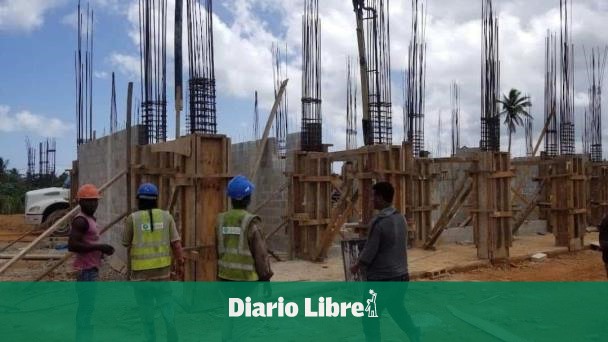In sectors such as construction and agriculturewhere the intensity of manual work remains high, the labour It represents an important component in the cost structure. However, the value that this workforce adds to the final product contrasts with the income they receive, especially in sectors that depend widely on Haitian workersmany times informal and without certification.
According to Eliseo Cristopherpresident of the Dominican Confederation of Micro, Small and Medium Enterprises of the Construction (Copymecon), la labour can represent between a 25 % and 40 % of the total direct cost In medium -sized residential and commercial projects. In lower -scale works or in specific stages such as finishes, this percentage can be even greater.
“He construction sector is characterized by a complex cost structure where labour It represents a significant, although variable portion of the total cost of a project, “Cristopher said.
Analysis of labor cost in low -cost home
The head of Copymecon explained that, in the context of the construction of low -cost housing, it is essential to understand that the final sale price of a housing unit does not correspond exclusively to the cost of construction. This price includes a variety of Additional componentssuch as the value of the land, permits and licenses, technical and legal fees, financial costs and the profit margin of the developer.
Taking as an example a house with a sale price of 5,025,380.75 pesos, it can be estimated that The direct construction cost It represents approximately 60 % of this value, that is, around 3,015,228.45 pesos.
Within this direct cost, Labor —They as human work directly involved in the execution of the work – usually represents between 25 % and 40 %, depending on factors such as the type of constructionthe level of termination, the geographical location and the construction system used.
Based on these percentages, it can be estimated that The cost of direct labor In this type of project it would be located in a range between 753,800 and approximately 1,206,000 pesos.
He said that “it is important to highlight” that these values are referential And they can vary significantly from one project to another, so each development requires an individualized technical-economic analysis to determine its real cost structure.
However, that economic impact does not necessarily translate into high wages. The workers not qualified (mostly Haitians) win between 800 and 1,200 pesos a daywhile semi-ranches They reach up to 2,000 pesos, depending on the skill and experience.
The qualified workers As masons or experiences with experience they can win between 2,000 and 4,000 pesos or more per day.
In the case of technicians and supervisors, monthly wages vary between 25,000 and 60,000 pesosaccording to specialization. But the real challenge is in the lowest link in the chain: “There is a great gap between the value that the work adds to the work and what is paid to those who execute it.”
Agriculture: The case of bananas and the cost of social justice
In The agricultural sectorExport bananas cultivation also reveals how the labor cost affects the price of the product. According to Martín PeñaExecutive Director of Dominican Association of Bananos Producers (Adobanano), the daily salary of a field worker is from 714.56 pesos.
The cost of labour in the production of a Banana box (18.14 kg) With certification Fair trade It is from 4.17 pesosin a box that is sold to 10.30 pesos In the international market.
That means that more than 40 % of the final price The certified bananas comes from the labor line. For producers, complying with international standards implies not only paying salaries within the Dominican legal framework, but also guaranteeing health, safety and job stability conditions, according to Martín.
The weekly production cost per task (with cable via) amounts to 47,903 pesoswith a performance of 1.2 Boxes per taskwhich demands high efficiency from the worker.
- For the local market, the low cost to 25,000 pesos per taskbut the sale price also decreases considerably: around 650 pesos per quintal.
Peña emphasizes that, despite regulatory compliance, they persist Structural challenges: “Haitian workers have idiomatic barriers, high rotation and low training levels. That limits productivity and forces producers to invest more in training and supervision.”
Informality: an obstacle to productivity and competitiveness
One of the great challenges faced by MSMEs formalized in both sectors is the Labor informalityespecially when it comes to migrant workers. This practice reduces immediate costs for many companies, but undermines productivity and affects the competitiveness of companies that operate complying with the law.
“The problem is that many non -certified workers do not have how demonstrate your experiencewhich limits their income and leaves companies in a vicious circle of low productivity, “explains Cristopher.
Both he and Peña coincide in the urgency of promoting Training and Labor Certification Programs that allow raising the technical level of the labour and justify more competitive wageswithout affecting the sustainability of companies.
A pending balance
In the background of these numbers there is a deeper question: how to achieve that The economic value which represents the labour For a product is more fairly reflected in the worker’s salary?
To answer it you need a Comprehensive approachthat combines public policies, business commitment and a social look at the faces behind cement and land.
Meanwhile, workers (many without a contract or contract) continue Building infrastructure and reaping fruits that support the economy, without the final price reflecting how much its effort is really worth.


















